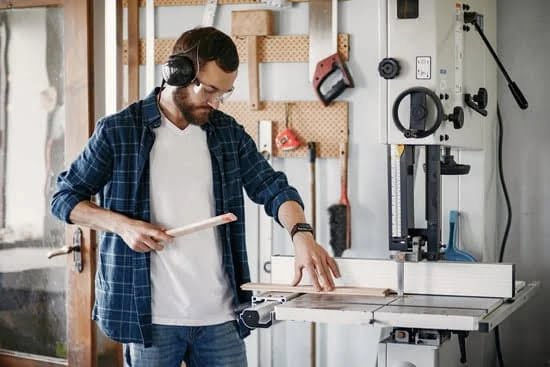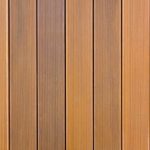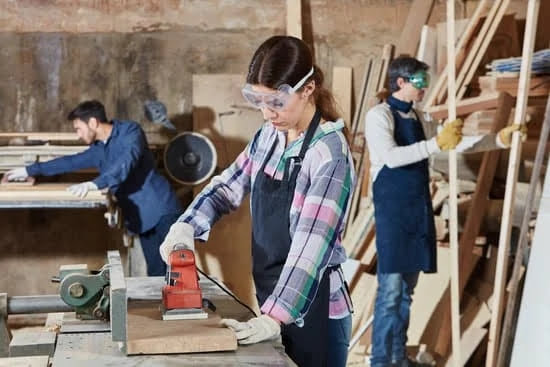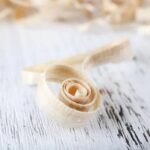Woodworking is a timeless art that has captivated craftsmen and enthusiasts for centuries. One particular aspect of woodworking that showcases both beauty and craftsmanship is the creation of wooden vases. In this article, we will delve into the world of woodworking vases and provide a step-by-step guide on how to make your very own.
The appeal of wooden vases lies in their unique blend of natural elegance and intricate design. Crafted from carefully chosen pieces of wood, these vessels not only serve as functional containers but also stand as works of art in their own right. The process of creating a wooden vase through woodworking combines technical skills with artistic vision, resulting in a finished piece that is truly one-of-a-kind.
Before diving into the practical aspects, it is important to understand the significance of choosing the right wood for your vase. Different types of wood possess distinct characteristics and properties that can greatly affect the appearance, durability, and overall quality of your creation. From hardwoods like maple or oak to exotics such as mahogany or rosewood, each wood type offers its own set of benefits and potential challenges.
By embarking on this woodworking journey, you will not only gain a deeper appreciation for the artistry behind wooden vases but also acquire valuable knowledge and skills in woodworking techniques. So gather your tools and materials as we guide you through the process of creating a stunning wooden vase that reflects your personal style and craftsmanship.
Choosing the Right Wood for Your Vase
When it comes to making a wooden vase through woodworking, choosing the right wood is crucial. The type of wood you select can significantly impact the final appearance and durability of your vase. Additionally, different woods offer various characteristics and benefits that can enhance the overall aesthetic of your creation.
One important factor to consider when selecting wood for a vase is its stability. Wood that is prone to warping, shrinking, or cracking may not be suitable for carving a vase as it may compromise its structure over time. Therefore, it is recommended to choose woods with good stability and low moisture content, such as hardwoods like cherry, walnut, or maple.
Another factor to consider is the color and grain pattern of the wood. Different types of wood possess unique colors and grain patterns that can add visual interest and depth to your vase. For example, cherrywood offers warm tones with beautiful variations in grain patterns, while walnut has rich dark hues and striking figure patterns.
| Wood Type | Characteristics |
|---|---|
| Cherry | – Warm tones\n – Beautiful variations in grain patterns\n – Good stability |
| Walnut | – Rich dark hues\n – Striking figure patterns\n – Good stability |
| Maple | – Light color with subtle grain patterns\n – Excellent stability\n – Ideal for intricate carvings |
It’s important to keep in mind that these are just a few examples, and there are numerous other types of wood available for vase woodworking. Each wood comes with its own unique characteristics and benefits, so take the time to explore different options and choose the one that best aligns with your vision for your wooden vase.
Essential Tools and Materials for Vase Woodworking
One of the key aspects of successful vase woodworking is having the right tools and materials. In this section, we will discuss the essential tools and materials needed for carving and assembling a wooden vase.
To start, let’s take a look at the necessary tools for vase woodworking:
- Chisels: Chisels are an indispensable tool for carving and shaping wood. They come in various sizes and shapes to accommodate different cuts and contours.
- Carving knives: These small knives with sharp blades are used for finer details and intricate carving work on the vase.
- Gouges: Gouges are similar to chisels but have curved cutting edges, making them ideal for creating concave or convex shapes on the vase.
- Mallet: A mallet is used in conjunction with chisels or gouges to provide impact force when striking into the wood.
- Sandpaper: Sandpaper is critical for achieving smooth surfaces on your wooden vase. Different grits of sandpaper can be used depending on how smooth you want the finish to be.
In addition to these tools, there are also specific materials required for vase woodworking:
- Wood: Choosing the right wood is crucial for a successful wooden vase project. Some common types of wood suitable for vases include maple, cherry, walnut, and oak. Each type offers its own unique grain patterns, color variations, and working characteristics.
- Wood glue: Wood glue is necessary for securing joints during assembly. Choose a high-quality wood glue that provides strong bonding while allowing some flexibility.
- Finishing products: Depending on your personal preference, you may want to apply a finish to your wooden vase to enhance its appearance and protect it from wear and tear. Various finishes such as stain, oil, or varnish can be used.
Having these essential tools and materials before starting your project will help ensure that you have everything you need to create a beautiful and long-lasting wooden vase.
Planning Your Vase Design
When it comes to woodworking and creating a wooden vase, designing your vase is a crucial step in the process. A well-planned design will not only ensure that your finished product meets your expectations but also allow you to consider important factors such as shape, size, and aesthetics. Here are some tips and techniques for planning your vase design.
- Consider Shape, Size, and Function: Before you start sketching your design, take some time to think about what kind of shape and size you want your vase to be. Consider the purpose of the vase – will it primarily be used for holding flowers or purely for decorative purposes?
The shape and size should ideally match its intended function. For instance, if you plan on using the vase for long-stemmed flowers, a narrow neck would be ideal. - Sketch and Visualize: Once you have an idea of the shape and size, it’s time to put pen to paper and sketch out your design. Start with rough sketches to get an idea of the overall form and proportions.
Experiment with different shapes and curves until you find a design that resonates with you. Don’t worry about making it perfect at this stage; this is just to help visualize how your final product will look. - Pay Attention to Aesthetics: As wooden vases often serve as decorative pieces, aesthetics play a vital role in their design. Think about the style or theme that aligns with your personal taste or fits in with the existing decor of your home. Consider details like decorative elements or accents that could enhance the overall appeal of your vase.
- 4.Get Feedback: It can be helpful to seek feedback from others during this planning stage. Share your sketches with friends or fellow woodworkers who can provide valuable insights or suggestions on your design. They might offer fresh perspectives or point out any potential issues that you may have overlooked.
By carefully planning every aspect of your vase design, you set yourself up for success. It allows you to create a vision of what you want your wooden vase to look like and helps guide you through the carving and shaping process. So take your time, experiment with different ideas, and let your creativity flourish as you plan the perfect design for your wooden vase.
Preparing the Wood for Vase Carving
Before you can begin carving your wooden vase, it is crucial to properly prepare the wood. This preparation process ensures that your vase will be sturdy, smooth, and free from imperfections. Here are a few essential steps to follow when preparing the wood for vase carving.
Firstly, inspect the wood carefully and remove any knots or rough edges. Knots can weaken the structure of your vase and may cause it to break over time. Carefully use a chisel or carving knife to remove any knots or damaged areas on the surface of the wood. Smooth out rough edges using sandpaper or a hand plane, ensuring an even surface for carving.
After removing imperfections, it’s important to focus on sanding and smoothing the entire piece of wood. Start with coarse grit sandpaper and gradually work your way up to finer grits for a polished finish. Sand in the direction of the grain to avoid scratches and achieve a smoother surface.
Once you have completed sanding, thoroughly clean off any dust or debris from the wood. A clean surface is essential for applying any finishes later on in the process. Use a tack cloth or soft brush to remove all particles from all crevices of your vase.
By taking these preliminary steps, you set yourself up for success in creating a beautifully carved wooden vase. Properly preparing your wood not only ensures its durability but also enhances its natural beauty and allows for easier carving later on.
The next step after preparing the wood is to move on to carving and shaping your vase according to your design plan. This stage requires precision and patience as you bring your vision to life through carefully executed cuts and strokes. Remember, each piece of wood is unique, so embrace its natural characteristics as you carve and bring out its inherent beauty.
Carving and Shaping the Vase
Carving and shaping the vase is a crucial step in the woodworking process that brings your wooden vase to life. This section will guide you through the step-by-step process of carving the desired shape, provide tips for achieving desired curves and angles, and emphasize the importance of patience and precision in the carving process.
Step-by-Step Process of Carving the Vase Shape
To start carving your wooden vase, it is essential to have a clear plan and vision of the final design. Begin by marking out the dimensions and shape on the wood using a pencil or marker. This will serve as a guide throughout the carving process.
Using a bandsaw or coping saw, carefully cut along the outline of your vase shape. Take your time and use smooth, controlled cuts to avoid any unnecessary damage to the wood.
Once you have cut out the rough shape, proceed to refine it by using various hand tools such as chisels, gouges, rasps, and files. Working slowly from larger tools to smaller ones, remove excess wood and gradually bring your vase shape into focus.
Tips for Achieving Desired Curves and Angles
Creating smooth curves and elegant angles in your wooden vase requires a combination of skill, practice, and patience. Here are some tips to help you achieve your desired aesthetic:
- Use templates or stencils: If you’re aiming for symmetrical shapes or specific patterns on your vase, create templates or stencils to guide your carving process. This will ensure consistent curves and precise angles.
- Work with grain direction: Pay attention to the grain direction of your wood while carving. Following its natural flow will result in smoother surfaces and less chance of splitting or tearing.
- Gradual shaping: Avoid removing large chunks of wood all at once when shaping curved sections. Instead, work gradually by taking small increments off until you achieve the desired curve. This approach allows for more control and helps maintain the integrity of the wood.
Importance of Patience and Precision
The process of carving and shaping a wooden vase requires patience and precision. Take your time to carefully carve each section, continuously checking measurements and proportions. It’s better to progress slowly than rush and risk making irreversible mistakes.
Maintaining sharp tools is vital for achieving precision in your carving. Dull tools can lead to slips or inconsistent cuts, which can negatively impact the overall shape of your vase. Regularly sharpen your chisels, gouges, and other tools throughout the carving process to ensure clean cuts.
Remember that woodworking is as much about enjoying the journey as it is about the final product. Embrace each step with patience, precision, and an appreciation for the artistry you are creating.
Adding Decorative Elements to Your Vase
When it comes to creating a one-of-a-kind wooden vase, adding decorative elements can truly elevate the beauty and uniqueness of your piece. Incorporating artistic details allows you to showcase your creativity and personal style. Here are some techniques you can use to add that extra touch to your wooden vase:
- Creating Patterns, Motifs, and Inlays: One way to make your wooden vase stand out is by incorporating patterns, motifs, or inlays. This can be achieved through carving or using different types of wood with contrasting colors. Consider experimenting with traditional or geometric designs to create a visually stunning effect.
- Adding Texture or Accents: Texture can add depth and visual interest to your wooden vase. You can achieve this by using techniques such as wood burning, sculpting, or even applying various materials like stones or metals onto the surface. Additionally, adding accents such as metal bands or decorative handles can enhance the overall aesthetic of your vase.
- Embracing Natural Beauty: Instead of adding decorative elements, you may choose to highlight the natural beauty of the wood itself. Opt for a more minimalist approach by focusing on smooth lines and polished finishes that showcase the grain patterns and unique characteristics of the wood species you’ve chosen.
Remember that adding decorative elements should complement the overall design of your wooden vase rather than overpower it. Take into consideration the size and shape of your vessel when deciding on patterns or textures so that they harmonize with its form.
It is essential to plan out these decorative elements before starting any carving or shaping processes. Creating sketches or visualizing the design beforehand will help you see how different artistic choices will interact with each other and ensure a cohesive final product.
By adding decorative elements to your wooden vase, you’ll transform it into a true work of art that reflects your individuality and craftsmanship.
Finishing and Polishing Your Wooden Vase
Once you have completed the carving and shaping process of your wooden vase, it is time to focus on giving it a beautiful finish. The finishing stage is crucial as it not only enhances the natural beauty of the wood but also protects it from moisture, dirt, and other external elements. In this section, we will discuss various finishing techniques that can be used to achieve a professional and long-lasting result.
One popular method for finishing wooden vases is staining. Stains come in a wide range of colors and are applied to the surface of the wood to enhance its grain patterns and overall appearance. Before applying the stain, it is important to ensure that the surface is thoroughly clean and smooth.
You can use sandpaper or a sanding block to remove any imperfections or rough spots. Once the wood is smooth, apply the stain using a brush or cloth, following the manufacturer’s instructions. Allow the stain to fully dry before moving on to the next step.
Another option for finishing your wooden vase is oiling. Oiling offers a natural look that brings out the richness of the wood while providing protection. There are several types of oils available, such as linseed oil, tung oil, or Danish oil.
Apply a liberal amount of oil using a brush or cloth and allow it to soak into the wood for about 15-20 minutes. Wipe off any excess oil with a clean cloth and let it dry overnight. Repeat this process until you achieve your desired level of sheen.
In addition to staining and oiling, varnishing is another popular option for finishing wooden vases. Varnishes create a protective layer over the wood that not only adds shine but also prevents scratches and wear over time. Before applying varnish, make sure that your vase’s surface is clean and smooth by using fine-grit sandpaper or steel wool to remove any imperfections.
Apply the varnish using a brush, following the manufacturer’s instructions on drying times and the number of coats needed. Allow each coat to fully dry before applying another layer. Once you are satisfied with the finish, let the final coat cure for at least 24 hours.
Remember, whichever finishing technique you choose, it is important to handle your wooden vase with care during this stage to prevent any damage or scratches to the surface. Once your wooden vase is finished, take time to appreciate and showcase its beauty. Consider placing it in a prominent location in your home where it can be admired by all.
To keep your wooden vase looking its best over time, remember to avoid direct sunlight exposure and excessive moisture. Regularly dusting and gently cleaning the surface will help maintain its longevity.
Finishing and polishing your wooden vase is the final step in bringing out its true beauty. With careful attention to detail and patience, you can achieve a stunning result that not only showcases your craftsmanship but also adds an elegant touch to any space.
Displaying and Caring for Your Wooden Vase
Choosing a Display Location
Once you have completed your beautiful wooden vase, it’s essential to find the perfect spot to display it in your home. Consider the design and style of your vase when choosing its display location. Larger vases may be better suited for floor displays or prominently placed on a mantel or table, while smaller vases can be showcased on shelves or countertops.
Think about the room’s overall decor and color scheme to ensure that the vase complements its surroundings. Additionally, consider the lighting in the area where you plan to display your vase. Natural light can enhance the wood’s beauty, so placing it near a window or source of natural light may provide an optimal showcase.
Maintaining Your Wooden Vase
To keep your wooden vase looking its best, proper care and maintenance are crucial. Avoid exposing the vase to direct sunlight for extended periods as this can cause fading or drying of the wood. Use appropriate coasters or mats underneath the vase if placing it on delicate surfaces to prevent scratches.
Regular cleaning is also important in maintaining the beauty of your wooden vase. Simply dusting it regularly with a soft cloth will help remove any accumulated dirt or debris. If necessary, lightly dampen the cloth with water or use a mild soap solution to gently clean any stubborn stains.
Preserving Your Wooden Vase
To protect and preserve your wooden vase, consider applying a protective finish periodically. Finishing options such as staining, oiling, or varnishing not only enhance the natural beauty of the wood but also provide protection against moisture and everyday wear and tear.
Before applying any finish, ensure that your vase is clean and dry. Follow the manufacturer’s instructions for application techniques and recommended drying times. Be patient during this process as allowing ample drying time between coats will result in a more durable finish.
By taking these steps to care for and preserve your wooden vase, you can ensure that it remains a cherished piece in your home for years to come.
Conclusion
In conclusion, the art of woodworking vases allows for the creation of exquisite and unique pieces that showcase beauty and craftsmanship. Throughout this article, we have explored the various aspects involved in making a wooden vase through woodworking. We began by discussing the importance of wood selection, highlighting different types of wood suitable for vase making and their specific characteristics and benefits.
Furthermore, we provided a comprehensive list of essential tools and materials needed for carving and assembly, emphasizing their function and importance. Planning your vase design was also addressed, with tips on creating a well-constructed design plan that considers shape, size, and aesthetics. Preparing the wood for carving was discussed in detail, stressing the necessary steps to remove imperfections and achieve proper sanding and smoothing.
Moving on to the carving process, we walked through step-by-step instructions while providing tips on achieving desired curves and angles with patience and precision. Additionally, we delved into the exciting realm of adding decorative elements to your wooden vase, exploring techniques for creating patterns, motifs, inlays, texture or accents. Finishing and polishing techniques were also highlighted as crucial steps to protect the wood while enhancing its natural beauty.
Finally, we concluded by encouraging readers to embrace the artistry and personal touch of handmade objects like wooden vases. We emphasized the satisfaction found in exploring creativity and craftsmanship through woodworking. With this newfound knowledge at hand, may you embark on your own woodworking journey to create stunning handcrafted wooden vases that can be admired for years to come. Enjoy embracing the beauty of these timeless treasures.
Frequently Asked Questions
Can you make a vase out of wood?
Yes, it is certainly possible to make a vase out of wood. Woodworking craftsmen or artisans can shape and carve a solid block or piece of wood into a vase-like structure.
The process involves carefully selecting the type of wood and planning the design, then using tools like chisels, saws, and sandpaper to shape the wood into the desired form. The final step usually includes applying finishes or varnishes to protect and enhance the appearance of the wooden vase.
How do you make a flower vase step by step?
Making a flower vase step by step involves several key steps. First, you’ll need to gather materials such as a cylindrical container (glass, ceramic, or any other material), floral foam, floral tape, and decorative items like ribbon or beads if desired. Next, prepare the base by inserting floral foam inside the container and securing it with floral tape.
Then, slowly start arranging flowers by cutting their stems at an angle and placing them in the foam while ensuring they are evenly spaced and balanced. Finally, fill any gaps with additional greenery or filler flowers for a fuller arrangement and add any decorative elements around the rim or base of the vase.
How to make a cheap vase?
Creating a cheap vase can be an enjoyable and budget-friendly project with various DIY options available. One option is repurposing household items like empty glass jars, bottles, tin cans, or even old containers by decorating them creatively with paint, paper wraps, ribbons, or other found materials to give them a fresh look suitable for holding flowers.
Another option is exploring thrift stores or flea markets where you may find unique vases at affordable prices that require minimal decoration to meet your aesthetic preferences. Additionally, using natural materials like clay pots or woven baskets can provide an earthy charm while being cost-effective alternatives as well.

Hi everyone! I’m a woodworker and blogger, and this is my woodworking blog. In my blog, I share tips and tricks for woodworkers of all skill levels, as well as project ideas that you can try yourself.





